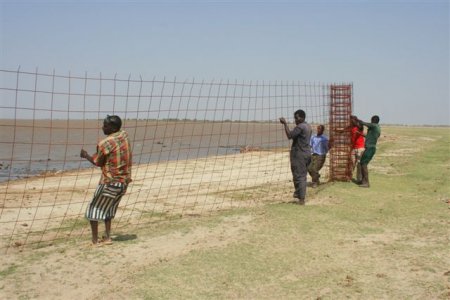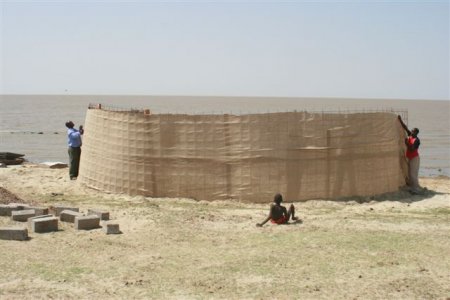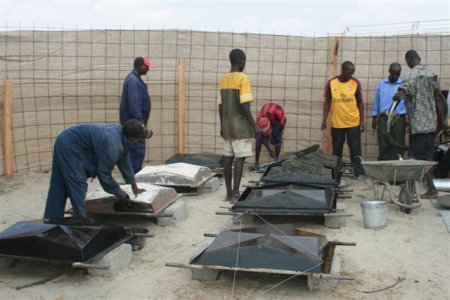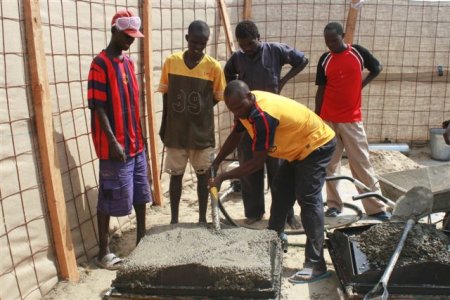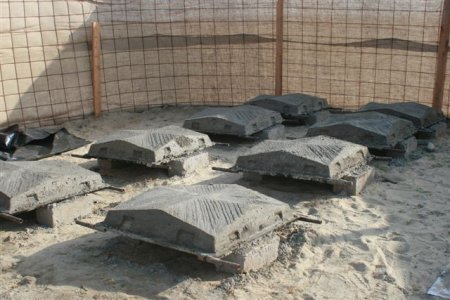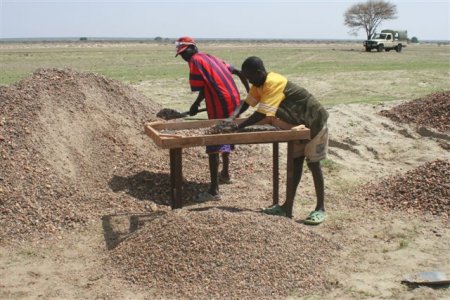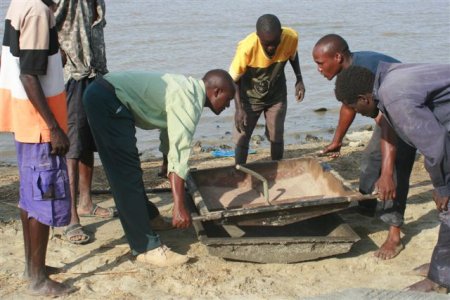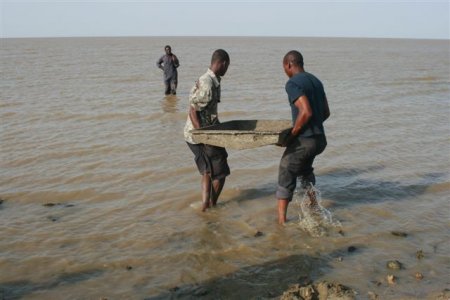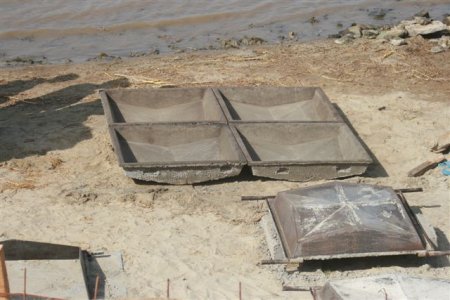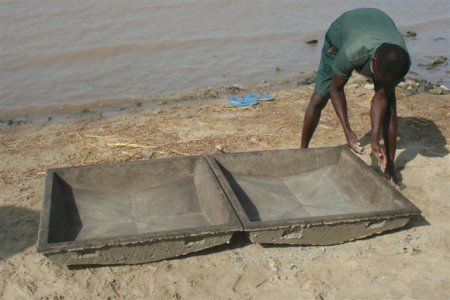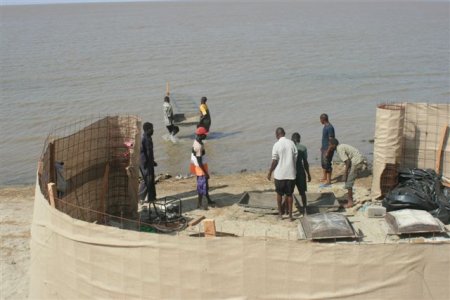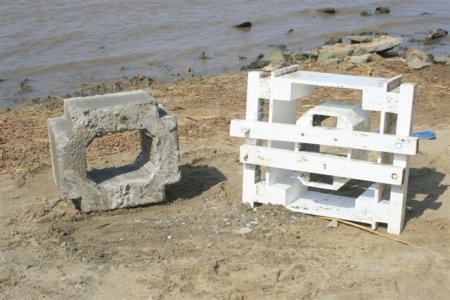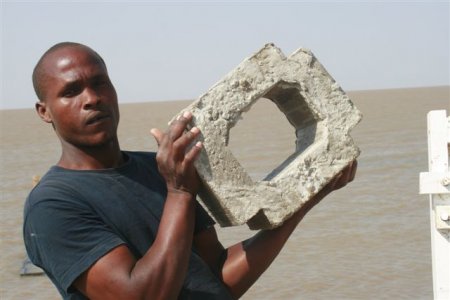Due to the remoteness of Ileret and the expense of transporting building materials is very costly. Therefore new techniques are to be employed in the buildings on this side of the lake to try to reduce costs. One approach is to use concrete waffles that are made from a mould for the roofing of the buildings rather than to lay steel and concrete slabs as has been the approach at the TBI Turkwel field station.
|
Testing the strength of the roofing waffles Josephat stands on top of 4 bags of cement placed on top of a waffle.
|
Here are a series of images and descriptions thanks to Fraser Smith who is overseeing the construction at Ileret.
By placing the waffles side by side and supporting them on the underside with steel uprights at each corner, they take the place of timber shuttering. Reinforcing steel bar is placed down the troughs and BRC mesh on top, before covering them with a thin layer of concrete.
Their strength is in their dome shape and as a result, they save on a third of the amount of steel and concrete normally used in casting a concrete slab. Plus there is no need for timber shuttering. All this adds up to a huge saving when construction material have to be transported 4 days by truck.
In a large structure like the Turkwel dining / conference building, a waffle ceiling, with a “solid steel reinforced waffle” on top of every column, one no longer needs ring-beams and beams – another huge saving in timber and time.
The first obstacle was to deal with the wind, that would turn our waffles into a crumbly mess.
A Hessian clad, BRC boma did the trick……..
Left to set under plastic overnight, they are then separated from their mould and given a touch-up before the next phase………
With 8 moulds set to go, the team look on as Wycliffe shows the technique of moulding the concrete waffles…………..first by hand, then with a vibrater and finally beaten into shape!
With Lone Tree in the background, the Kokoto is prepared…………..The howling wind is used to separate the silt from the stone and a screen is used to select the wanted size. Ideally, nothing greater than 8mm for the waffles, although the larger stones will be used in block production and mass concrete work……..
The key to making strong cement products is in the curing. The slower the better and ideally cement should be kept moist for 7 days.
This is no easy feat in a place like Turkana, short of curing under water! As we are presently trucking all our water requirements up from the Lake, it makes sense to move our production site to the Lake. The sand is from a lugga, only a few hundred metres away and it is only the stone that is 4 km off direct track. But taking everything else into account, its a cost effective way to go.
………………Gently they are carried out to sea and submerged for 7 days, “to dry nice and slow”. In Turkana heat with Turkana wind, this seems the best option of curing the cement products as slow as possible.
And finally……………………..Lego Column Blocks.
No timber shuttering needed and no carpenter needed. What’s more the columns can be lined up with a building line – far easier than lining up columns inside wooden shuttering.
To construct a steel reinforced concrete column, one places the pre-fabricated column blocks on top of each other. Y-12 Reinforcing bar runs up the recess on the outside corner of each bock. The four Y-12’s are joined by a 3mm wire in between each block When the column is complete the corners of the blocks are plastered over to conceal the Y-12.


